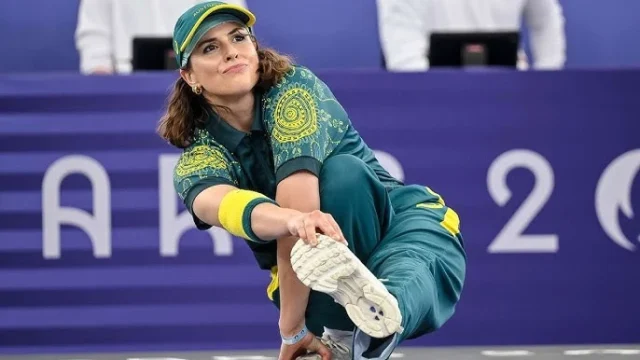The world of breaking, also known as breakdancing, witnessed a monumental moment when Raygun, an Australian Olympic breakdancer, made her debut at the Paris Games. The 36-year-old B-girl, whose real name is Rachael Gunn, captured global attention not just with her performance but also with the intense hate and criticism that followed. This article delves into her journey, the impact of social media, and the challenges she faced as she represented her native country on the world’s biggest stage.
The Rise of Raygun
Raygun’s journey to becoming an Olympic breakdancer was nothing short of remarkable. As an Aussie breaker, she was known for her unique routines that often incorporated elements of her native country’s culture. One move, in particular, where she mimicked a kangaroo, went viral on the internet. This move, along with her distinctive style, earned her both admiration and criticism.

However, the journey was not without its challenges. Gunn faced relentless online criticism and hate for her performance at the Paris Games. Despite the positivity she received from her supporters on Instagram, the devastating impact of the hate she encountered was undeniable.
The Impact of Social Media and Memes
Social media played a significant role in shaping public perception of Raygun’s Olympic debut. Memes and skits re-creating her dance moves quickly spread across the internet, often mocking her performance. The clips of her routines, especially the kangaroo move, became a source of amusement for many, but for Gunn, it was a different story.
In a statement posted on her Instagram, Gunn expressed her gratitude to those who supported her, saying, “I really appreciate the positivity and I’m glad I was able to bring some joy into your lives.” However, she also acknowledged the downside of fame, saying that she didn’t realize it would “open the door to so much hate, which has frankly been pretty devastating.”
The Pressure of the Olympic Stage
The Olympic stage is known for its immense pressure, and for Raygun, this was no exception. Representing the Australian Olympic team in breaking’s Olympic debut was a significant achievement, but it also came with its share of challenges. The critics who questioned her place on the team added to the stress, leading to further scrutiny of her performance.
The Australian Olympic Committee (AOC) came to her defense, with AOC Chief Executive Officer Matt Carroll stating that Gunn was selected through a “transparent and independent qualification and nomination process.” Despite this, a Change.org petition emerged, accusing Gunn of “manipulating the selection process to her own advantage.” The petition, which demanded an apology from Gunn and Paris Chef de Mission Anna Meares, garnered over 56,000 signatures.
In response, Carroll condemned the petition, calling it “disgraceful” and based on “falsehoods concocted by an anonymous person.” He further stated that the petition amounted to “bullying and harassment” and demanded its immediate removal.
Standing in Solidarity
The Australian Breaking Organization also issued a statement, emphasizing that the qualification process adhered to the World DanceSport Federation regulations, which align with International Olympic Committee standards. The organization condemned the global online harassment of Raygun and expressed solidarity with her, acknowledging the immense pressure of performing on the Olympic stage.
The head judge of the Olympic breaking competition, Martin Gilian, also weighed in, stating that while Gunn “did her best,” her level “was maybe not as high as the other competitors.” However, he praised her effort, noting that she embodied the true spirit of breaking by giving her all on the world stage.
Mental Health Support and Moving Forward
The World DanceSport Federation, as the international governing body for breaking, recognized the toll that the online harassment had taken on Gunn. They offered her mental health support to help her cope with the challenges she faced following her Olympic experience.
In a bid to set the record straight, Gunn addressed the social media posts that mocked her for allegedly receiving zero points from the Olympic judges. She clarified that “there are actually no points in breaking,” and urged people to check the Olympics’ website to understand how the judges evaluated the battles based on criteria such as creativity, musicality, personality, technique, performativity, and variety. Ultimately, the breaker with the most votes in each round is declared the winner.
Conclusion
The story of Raygun, the viral Australian Olympic breakdancer, is one of resilience in the face of devastating criticism. Despite the hate and harassment she endured, she remained proud of her performance and her role in breaking’s Olympic debut. Her journey highlights the pressures of competing on the Olympic stage and the impact of social media in today’s world. As she moves forward, Raygun serves as a reminder of the importance of mental health support and the need to stand against bullying and harassment.
If you love staying updated with the latest in fashion, travel, tech, sports, and gadgets, be sure to follow new feed nation. Don’t miss out on any updates—get the freshest news and trends delivered right to you!





























